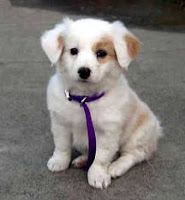After having filmed and edited my interview, I felt it lacked something and that it wasn't particularly working. I tried to re-work the video but it still didn't feel like it was successful. Due to this I decided that I would start again with my interview and chose somebody completely different for my video.
Due to Brighton Fringe Festival being on at the moment, I felt it would be interesting to speak to one of the performers and acts from this. I felt this would be a perfect opportunity to really get to the 'heart' of Brighton, as this festival is all about Brighton and encouraging up and coming talent. The atmosphere at the Fringe Festival is also positively buzzing and I felt that here would be a good place to base my interview, on the streets as it were, getting involved with the people. I decided to interview Doug Segal, a mind reader. Doug has performed on the BBC on New Years Eve and I felt that his skills and personality would make for a frank and honest interview, and would also be quite entertaining and something a little different.
Thursday, 26 May 2011
Wednesday, 25 May 2011
Sussex Lives Podcast - Camera Angles
For an interview the shots necessary are generally close-ups and mid-shots, you don't tend to need long-shots as you want the interview to feel personally and the viewer to feel like they are talking to the interviewee. For this the interviewee should talk to the camera as if it was a person. The angle of the camera will stay mostly at eye-level or slightly above or below, this again to make the interview feel 'real' and the audience to feel like the interviewee is talking directly to them. (For camera shots and angles see below).
Sussex Lives Podcast - Research
To understand what a short interview or a podcast usually looks like, I decided to do some research. I hoped my research would allow me to have a clear idea of possible camera angles and shots that I could use. I also hoped I would learn how the mood of an interview went and what sort of questions are usually asked.
http://www.youtube.com/watch?v=FMpBwiSdm-w
After having watched this podcast, I established that usually they have quite an informal, relaxed feel to them. I realized that the interviews are quite natural and led by a list of questioning. However unlike this interview, the interviewer would be off camera and behind the scenes, I would also cut out the questions so it felt like the interviewee was giving a short talk about themselves.
http://www.youtube.com/watch?v=N0fEMw5k2CI&feature=relmfu
Again this interview is quite relaxed. But unlike this where the 'fans' are asking questions, as stated above I will ask the questions myself. I think I will incorporate more cuts than this video, as it may be more interesting for the viewer if the camera is not just positioned in one place the whole way through. It is evident that when asking a question, it is down to the interviewee to take the question wherever they like. They may answer the question but then it may lead them on to talking about something else.
http://www.youtube.com/watch?v=FMpBwiSdm-w
After having watched this podcast, I established that usually they have quite an informal, relaxed feel to them. I realized that the interviews are quite natural and led by a list of questioning. However unlike this interview, the interviewer would be off camera and behind the scenes, I would also cut out the questions so it felt like the interviewee was giving a short talk about themselves.
http://www.youtube.com/watch?v=N0fEMw5k2CI&feature=relmfu
Again this interview is quite relaxed. But unlike this where the 'fans' are asking questions, as stated above I will ask the questions myself. I think I will incorporate more cuts than this video, as it may be more interesting for the viewer if the camera is not just positioned in one place the whole way through. It is evident that when asking a question, it is down to the interviewee to take the question wherever they like. They may answer the question but then it may lead them on to talking about something else.
Sussex Lives Podcast - Response
In order to represent the diversity of Brighton, I wanted to interview somebody not necessarily from Brighton originally, but who had chosen to reside here instead. I thought that this would be effective as it would be interesting to investigate why somebody from perhaps another country would chose to specifically live in Brighton. I wanted to learn about the differences between here and the place where they were from and what they loved about Brighton. To fulfil this I decided I would interview Eduardo from Spain who had lived here for a year and a half. I chose Eduardo as he had specifically decided to live Spain to come and live in Brighton.
Crash, Bang, Wallop - Camera Angles
It is important to chose the correct camera angles when shooting a video. The camera shots and angles help to set the scene. In this situation, because my piece will be contain fast cuts, it is important to keep the viewer interested. To do this, I think it will work best with the use of a combination of close-ups, extreme close-ups and mid shots. This will allow the viewer to not become distracted and concentrate on one scene at a time. For the last scene of me running out the door, I will use a longer shot as the viewer needs to be able to see the whole shot in order to understand what I have just done. There would be no point using a close-up for this shot as the viewer wouldn't be able to see me running out the door.
Examples of camera shots
Extreme close-up
 This shot is usually used for a dramatic effect
This shot is usually used for a dramatic effect
and generally exaggerates what the eye would
normally see.
Close-up
 This shot shows very little background and
This shot shows very little background and
concentrates on something specific or a
particular detail. This is used to show
importance.
Medium shot
 In this shot the background detail is
In this shot the background detail is
minimal, it is used to show action and
usually contains a figure from the waist
up.
Long shot
 This is a full shot, showing the full length
This is a full shot, showing the full length
of the human body, it is 'life size'. The focus
of this shot is usually the character.
Examples of camera Angles
Camera angles are important as they give the audience the emotional information of the object being filmed.
Bird's-Eye view
This shows a scene directly from above, looking down on the action. It puts the audience in a God'like position.
High Angle
This angle is used to make the object seem less significant and small. The camera is elevated above the action.
Eye Level
The camera is positioned as if it is a human observing a scene.
Low Angle
Low angles increase height and add a sense of confusion to the viewer.
Examples of camera shots
Extreme close-up
 This shot is usually used for a dramatic effect
This shot is usually used for a dramatic effectand generally exaggerates what the eye would
normally see.
Close-up
 This shot shows very little background and
This shot shows very little background andconcentrates on something specific or a
particular detail. This is used to show
importance.
Medium shot
 In this shot the background detail is
In this shot the background detail isminimal, it is used to show action and
usually contains a figure from the waist
up.
Long shot
 This is a full shot, showing the full length
This is a full shot, showing the full lengthof the human body, it is 'life size'. The focus
of this shot is usually the character.
Examples of camera Angles
Camera angles are important as they give the audience the emotional information of the object being filmed.
Bird's-Eye view
This shows a scene directly from above, looking down on the action. It puts the audience in a God'like position.
High Angle
This angle is used to make the object seem less significant and small. The camera is elevated above the action.
Eye Level
The camera is positioned as if it is a human observing a scene.
Low Angle
Low angles increase height and add a sense of confusion to the viewer.
Tuesday, 24 May 2011
Crash, Bang, Wallop - Research
I decided to do some research into other videos so I could decide on what cuts to make. I also wanted to see what effects I could create when setting the mise-en-scene of the piece.
http://www.youtube.com/watch?v=zEQskIsHKT8
In the above video 'radiolab presents symmetry' I like the idea of symmetry, the way things go together. I think this is something to consider in my piece. I will think about what sorts of things go together, for example, waking up and having an alarm clock. Each scene doesn't last too long and there are many cuts, although my video will probably be a little faster in pace. I also like the way they have used specific noises that emphasize the scene, like at 0.40seconds when the shot gun is fired. I will incorporate this idea into my sequence.
http://www.youtube.com/watch?v=jNVPalNZD_I&feature=related
This video '16:Moments' is essentially what I am trying to create. My video is going to be a sequence of 'moments' leading up to when I leave the house. I will try to encapsulate every last moment that happens from opening my eyes when I wake up to the anguish on my face when I realise I have locked myself out. I like how the video has used a lot of close up shots, I will also does this as it keeps the viewer interested, especially in such a short piece. It is important to emphasize detail and to do this it is necessary to use close up shots.
http://www.youtube.com/watch?v=zEQskIsHKT8
In the above video 'radiolab presents symmetry' I like the idea of symmetry, the way things go together. I think this is something to consider in my piece. I will think about what sorts of things go together, for example, waking up and having an alarm clock. Each scene doesn't last too long and there are many cuts, although my video will probably be a little faster in pace. I also like the way they have used specific noises that emphasize the scene, like at 0.40seconds when the shot gun is fired. I will incorporate this idea into my sequence.
http://www.youtube.com/watch?v=jNVPalNZD_I&feature=related
This video '16:Moments' is essentially what I am trying to create. My video is going to be a sequence of 'moments' leading up to when I leave the house. I will try to encapsulate every last moment that happens from opening my eyes when I wake up to the anguish on my face when I realise I have locked myself out. I like how the video has used a lot of close up shots, I will also does this as it keeps the viewer interested, especially in such a short piece. It is important to emphasize detail and to do this it is necessary to use close up shots.
Crash, Bang, Wallop - Response
My initial thoughts for this brief was to think of a sequence that would work successfully incorporating so many fast cuts, whilst still telling a story. I wanted to keep to quite a simple story as I thought this would make it easier to ensure I could make numerous cuts without the video seeming confusing to the viewer.
After some thought I decided my sequence would be a 'day in the life of' but more specifically it would be telling the story of waking up in the morning and showing a routine. I wanted to follow the events that led up to leaving the house. For my 'abrupt ending' I decided that I would lock myself out by leaving the keys in the door. I believed this would allow for several cuts to be made and I could shout out swearing and then cut it partially out, so that the viewer doesn't actually hear the word. I thought It was unnecessary for the viewer to actually hear the word as it would be funnier and less offensive if I cut it out part of the way through.
After some thought I decided my sequence would be a 'day in the life of' but more specifically it would be telling the story of waking up in the morning and showing a routine. I wanted to follow the events that led up to leaving the house. For my 'abrupt ending' I decided that I would lock myself out by leaving the keys in the door. I believed this would allow for several cuts to be made and I could shout out swearing and then cut it partially out, so that the viewer doesn't actually hear the word. I thought It was unnecessary for the viewer to actually hear the word as it would be funnier and less offensive if I cut it out part of the way through.
The Briefs
Crash Bang Wallop
For Crash Bang Wallop, you will use video editing to convey a fast and stimulating experience. To do this, you will need to make a short film piece that is between 15 and 20 seconds in length. Your piece can either describe an everyday situation in a dramatic or dynamic way or subvert the expected response to a situation. For example,
· The unbearable loudness of making breakfast as seen through a hangover
· Riding a children’s roundabout made to seem dark, sinister and threatening
Create 15-20 seconds of video with no less than 30 edits, placing an emphasis on abrupt editing that makes it look as action packed as possible, and creates a mood such as discordance or dynamism. You will try to make a film which creates dramatic impact but is as economical and succinct as possible.
Sussex Lives Podcast
You will be planning, shooting and editing a short interview based film, 1 minute in length, that can be used as a podcast for the Sussex based property and lifestyle magazine Latest Homes Sussex (latestsussex.co.uk).The aim of this series of podcasts is to reflect the diversity of interesting people that live in the region as part of their ‘lifestyles’ section of the magazine’s website, and the series is called ‘Sussex Lives’.
You need to find an interviewee with a quirky or interesting story to tell, line up the interview, record it in an appropriate location and film cutaways to use in the editing. To make the interviews a consistent series, the interview questions will be edited out of the sequence and as a group you need to develop a consistent look and feel for the lower third captioning.
Subscribe to:
Comments (Atom)